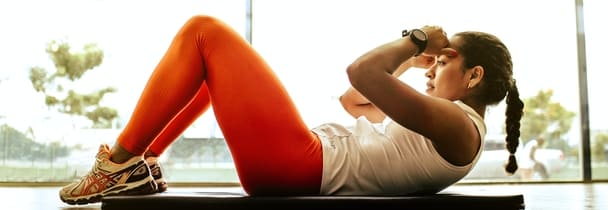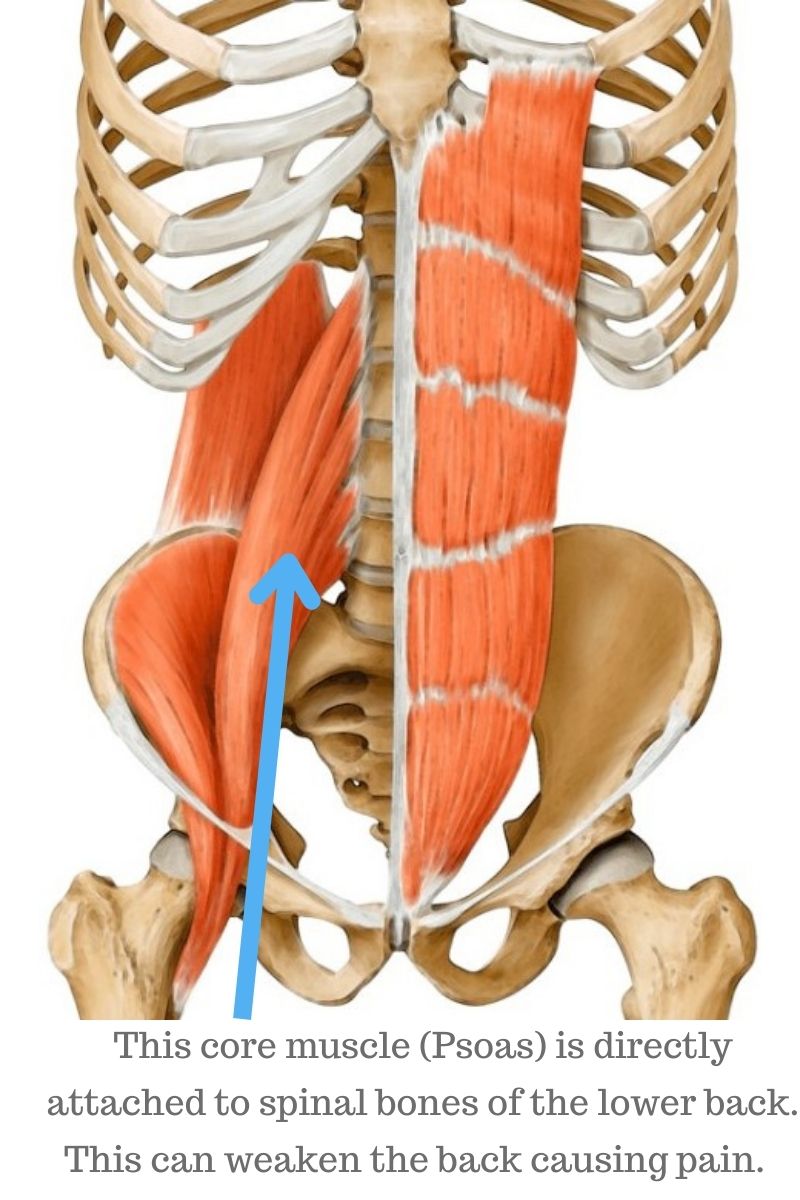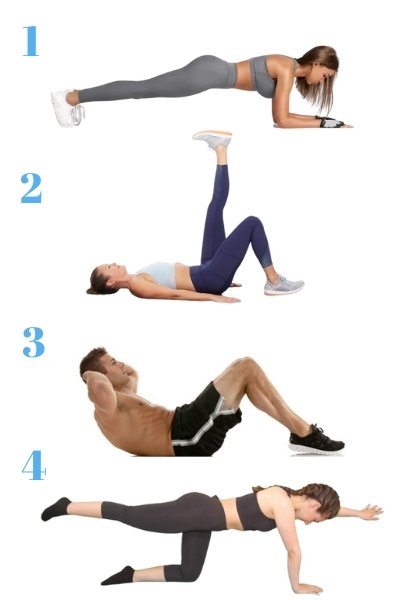AndCore Stability, Back Pain and Stomach Fat

Core Stability Exercises Can Cause Back Pain and
Won't Help Lose Tummy Fat Efficiently.
Discover how core stability exercises could be the very thing that is weakening your back. Discover the hidden dangers of exercising the core muscles and the best way to lose stomach fat.
What is the Core
The core is like having one tube inside another tube. The inside tube intimately the spine, and the outside tube contains both the ‘spine tube’ and the stomach organs – we loosely call the outside tube the stomach muscles. These stomach muscles go all the way round to join up with the back muscles.
Problem with the Core Stability Muscles
The problem is that the inner tube, the muscles that surrounds the entire spine in the lower back, is attached to all the spinal bones, and the other end of the muscle tube is attached to the tops of each leg, at the other end. These muscle tubes we collectively call the hip flexors. The main hip flexor is a muscle called Iliopsoas (psoas for short). The ‘P’ is silent.
How Core Stability Exercises Can Cause Pain
Under certain situations when psoas contracts (ie during a core stability exercise), because the core is attached to your spine, it will pull on the spine. If there is a weakness present in the spine, it will pull on it, disturbing it’s healing at best, or cause the injury to deepen at worst. Think of it this way, how can something knit together (ie heal) if it is being continually irritated or aggravated?

Why Are Core Stability Exercises Given
There is of course a place for these exercises. Core stability exercises should generally be given when the person is already fit and healthy and wants to go to the next level. It should always be remembered that these are potentially high-risk exercises. This means doing too much or doing them badly can actually weaken the back, not strengthen it, leading to lower back pain and injury.
For this reason we recommend it should only be given in an advanced exercise programme, or with one-to-one training. These exercises should not be undertaken during a back-pain episode, unless supervised one-to-one as mentioned.
In back pain, remember the core is attached to the lower back, ie the very area that is already injured, inflamed, sore, weakened, disc damaged, etc. So there is little merit in adding further load to that segment. It is already struggling to hold itself up in normal living, let alone to perform exercise on top.
Of course as part of a managed overall fitness programme core-stability exercises have their place in strengthening your body and lower back. But remember these exercises may not be suited for everyone.
Strength vs Stability vs Flexibility
People with back pain typically believe the route to healing an injury is through strength. Actually strength is achieved through (i) stabilising the injury first, then (ii) flexibility.
We can all guess what is likely to happen if we attach a powerful muscle to a stiff branch. The branch is likely to snap when the muscle is engaged.
In the spine, one needs to think about flexibility in the joints above and below the injury. The joints above and below an injury are invariably stiff – so causing the one joint inbetween these to over-work, and so become injured. Creating flexibility in the joints above and below is the key to long lasting cure.
Think of a sky-scraper. The building gains it’s strength by being designed to bend equally in the crucial areas, so no one single segment of the building has to bend dissproptrionatley in the the wind, leading to potential damage.
Trees are another example. Stiff old trees tend to snap in a storm. Trees that bend tend to fare better and remain standing.
As osteopaths we work to stabilise the joint segment first, and then to help re-distribute forces by making stiff joints share the load.
Care Stability Won’t Give You A Flat Stomach
It has been shown time and again, in medical studies and academic journals the world over, the fastest and most effective way of losing belly fat is through diet.
Exercise will help, but to a point. However here’s the reasons what you need to know:
- Core stability exercise is an in-effective way of burning belly fat. It’s an urban myth doing sit-ups, planks, etc will burn the fat faster than alternative exercises, such as getting out of breath exercises. The core stability exercises primarily targets Psoas and secondarily the stomach muscle and the fat around it.
- Isolated core stability exercises have an intrinsic propensity to injure the lower back, specially when the starting point of the patient, is an out of shape, potentially over weight, person. As Psoas is firmly anchored to every bone in the lower back, if you work Psoas harder, by definition, it is pulling on it’s own anchor point – the spinal discs and spinal bones. Over time, the anchor point can weaken to the point of spinal damage.
In terms of exercise, the most efficient way of losing weight is to exercise all 4 limbs at the same time. For example to use a cross-trainer at the gym, or something like Nordic walking outside. However almost any exercise that raises your heart rate or gets you out of breath will work – but check with your GP first if you are fit enough to start such exercising.
If you raise the heart rate to 60% of your theoretical maximum, it is the safest way to help burn fat – known as the ‘Fat Burning Zone'. The table below shows you what that figure should be. Any exercise at this heart rate, for around 60 minutes will make a big difference – including walking. However, it is best to use a variety of exercises. And, you don't have to do the exercise in one go – even two lots of 30 minutes a day will cut the mustard.
| Age | 60% of theoretical maximum heart rate. (Beats/min) |
| 30 | 114 |
| 35 | 111 |
| 40 | 108 |
| 45 | 105 |
| 50 | 102 |
| 55 | 99 |
| 60 | 96 |
| 65 | 93 |
| 70 | 90 |
| 75 | 87 |
Tip: not withstanding the above, try to exercise to the point that you don’t get ‘rebound hunger’ after the exercise. This happens when you over exercise, and then get the need to gorge food, leading to over-eating and loss of the calorie burning benefit during the exercise.
There are many health trackers on the market, such as Fitbit, Garmin, Samsung, Apple etc that can measure your heart rate as you exercise.
As ever, start slow. Exercise is a great leveler. It will help to re-tune your appetite and eventually exercise will help reduce your portion size, eating just what you need. It also has the health benefits we already know of – stronger heart, lower blood pressure, stronger bones, stronger muscles, calmer mind, better sleep etc.
Video
Discover how and why Psoas can cause so much trouble. Find out how sitting leading to a weakened core muscles, and eventually to back pain. There are some simple exercises at the end of the video that show you how to stretch psoas, safely.
Worst Core Exercises for the Low Back

In our osteopathic opinion, the top 3 exercises are the probably the worst for people trying to recover from back pain or those trying to strengthen a previously injured back. The risk between helping spilling into injury is high. As with all core exercises we recommend these are done one to one with a Pain Pilates practitioner. Exercise 4 is generally OK, but needs to be done with caution.











